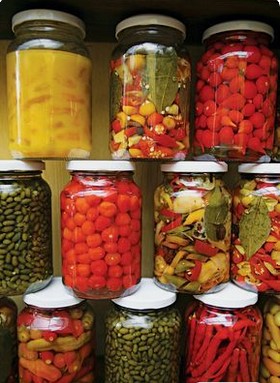Introduction:
In the realm of culinary creativity, recipes are more than just a list of ingredients and instructions – they are a reflection of the culinary genius and creativity of their creators. However, in an age of digital sharing and rapid dissemination of information, the protection of culinary intellectual property has become increasingly important. “Recipe Security” offers a solution, providing a framework for safeguarding the unique flavors and techniques that define our culinary creations. This article explores the importance of recipe security, the challenges it addresses, and the strategies for protecting your culinary intellectual property.
Recognizing the Value of Culinary Intellectual Property:
Recipes are not merely instructions for cooking – they are valuable assets that represent the culmination of creativity, innovation, and expertise. Whether it’s a family heirloom passed down through generations or a signature dish developed by a renowned chef, recipes have intrinsic value that deserves protection. Recipe security acknowledges the importance of culinary intellectual property and provides mechanisms to safeguard it from unauthorized use, reproduction, or modification.
Protecting Against Unauthorized Use and Reproduction:
One of the primary challenges facing culinary creators is the risk of unauthorized use and reproduction of their recipes. From unauthorized publication in cookbooks or websites to unauthorized commercial use in restaurants or food products, the potential for recipe theft is ever-present. Recipe security offers protection against such risks by establishing legal frameworks, such as copyright or trademark protection, to prevent unauthorized use and reproduction of recipes without the creator’s consent.
Ensuring Confidentiality and Trade Secret Protection:
For culinary professionals, maintaining the confidentiality of proprietary recipes and techniques is essential to preserving their competitive advantage in the market. Recipe security provides mechanisms for safeguarding confidential information and trade secrets, such as non-disclosure agreements (NDAs) and confidentiality clauses in employment contracts. By ensuring that sensitive information remains protected from unauthorized disclosure, recipe security enables culinary creators to maintain their competitive edge and preserve the uniqueness of their culinary creations.
Establishing Ownership and Attribution:
In the realm of culinary creativity, establishing ownership and attribution of recipes is crucial for recognizing and protecting the contributions of their creators. Recipe security enables culinary creators to assert their ownership rights over their recipes through documentation, registration, or publication. By establishing clear ownership and attribution, recipe security ensures that creators receive proper recognition and credit for their culinary innovations, preventing disputes over ownership and authorship.
Promoting Ethical and Responsible Culinary Practices:
Beyond legal protections, recipe security promotes ethical and responsible culinary practices that respect the creative contributions of others. Culinary professionals and enthusiasts alike are encouraged to uphold ethical standards of attribution, giving credit to the original creators of recipes and seeking permission before using or modifying their work. By fostering a culture of respect and collaboration within the culinary community, recipe security promotes fairness, integrity, and mutual respect among creators and consumers alike.
Conclusion:
Recipe security represents a critical aspect of culinary innovation and creativity, providing a framework for protecting the intellectual property rights of culinary creators. By safeguarding against unauthorized use and reproduction, ensuring confidentiality and trade secret protection, establishing ownership and attribution, and promoting ethical culinary practices, recipe security enables culinary creators to preserve the uniqueness and integrity of their culinary creations. With recipe security in place, culinary professionals and enthusiasts can continue to innovate, create, and share their culinary masterpieces with confidence, knowing that their intellectual property rights are protected and respected.
